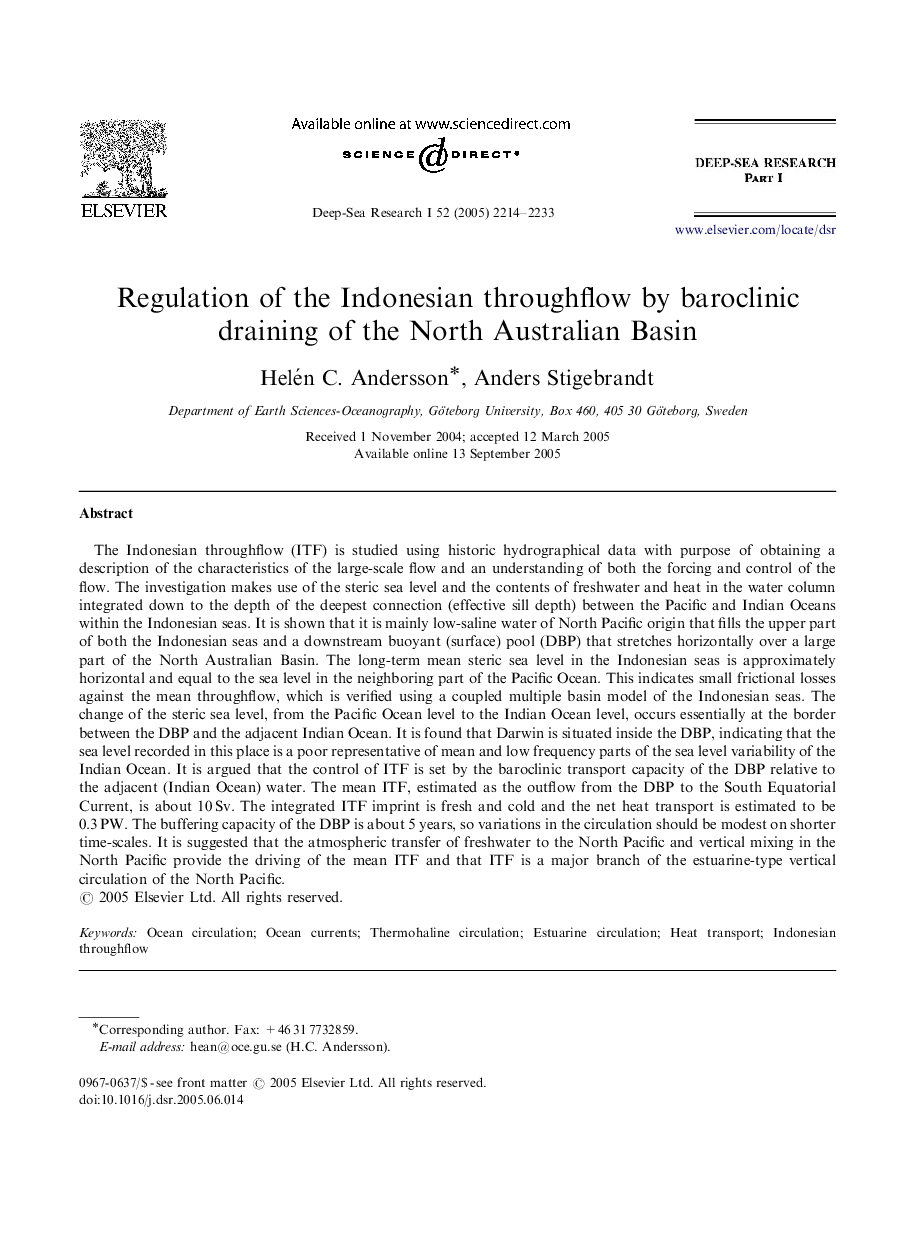| کد مقاله | کد نشریه | سال انتشار | مقاله انگلیسی | نسخه تمام متن |
|---|---|---|---|---|
| 4535830 | 1326152 | 2005 | 20 صفحه PDF | دانلود رایگان |

The Indonesian throughflow (ITF) is studied using historic hydrographical data with purpose of obtaining a description of the characteristics of the large-scale flow and an understanding of both the forcing and control of the flow. The investigation makes use of the steric sea level and the contents of freshwater and heat in the water column integrated down to the depth of the deepest connection (effective sill depth) between the Pacific and Indian Oceans within the Indonesian seas. It is shown that it is mainly low-saline water of North Pacific origin that fills the upper part of both the Indonesian seas and a downstream buoyant (surface) pool (DBP) that stretches horizontally over a large part of the North Australian Basin. The long-term mean steric sea level in the Indonesian seas is approximately horizontal and equal to the sea level in the neighboring part of the Pacific Ocean. This indicates small frictional losses against the mean throughflow, which is verified using a coupled multiple basin model of the Indonesian seas. The change of the steric sea level, from the Pacific Ocean level to the Indian Ocean level, occurs essentially at the border between the DBP and the adjacent Indian Ocean. It is found that Darwin is situated inside the DBP, indicating that the sea level recorded in this place is a poor representative of mean and low frequency parts of the sea level variability of the Indian Ocean. It is argued that the control of ITF is set by the baroclinic transport capacity of the DBP relative to the adjacent (Indian Ocean) water. The mean ITF, estimated as the outflow from the DBP to the South Equatorial Current, is about 10 Sv. The integrated ITF imprint is fresh and cold and the net heat transport is estimated to be 0.3 PW. The buffering capacity of the DBP is about 5 years, so variations in the circulation should be modest on shorter time-scales. It is suggested that the atmospheric transfer of freshwater to the North Pacific and vertical mixing in the North Pacific provide the driving of the mean ITF and that ITF is a major branch of the estuarine-type vertical circulation of the North Pacific.
Journal: Deep Sea Research Part I: Oceanographic Research Papers - Volume 52, Issue 12, December 2005, Pages 2214–2233